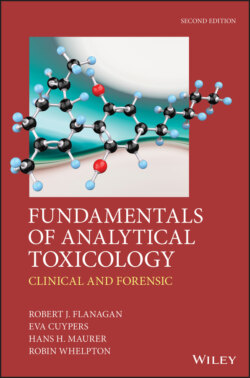Читать книгу Fundamentals of Analytical Toxicology - Robin Whelpton - Страница 36
2 Sample Collection, Transport, and Storage 2.1 Introduction
ОглавлениеIn analytical toxicology, no matter how complex the equipment and careful the analysis, the results may be rendered worthless if sample collection, transport, and storage have not been performed with the analysis in mind. Thus, it is important to be familiar with the nature and stability of the analyte(s), the nature of the sample matrix, and the circumstances under which the analyses are to be performed. Proper documentation of the history of the sample (origin, mode of collection, transport, storage, chain-of-custody documentation, and the like) is essential.
The analyte concentration in the specimen is generally assumed to be representative of the concentration in the particular fluid or tissue sampled. Anticoagulated whole blood, plasma (the fluid obtained on centrifugation of anticoagulated blood), or serum (the fluid remaining when blood has clotted) are widely used in clinical work. This is because not only is blood relatively easy to collect, but also a quantitative analysis can give useful information as to the magnitude of exposure and hence the severity of poisoning. Excretions (exhaled air, urine) or secretions (saliva, sweat) are often less useful as regards interpretation of quantitative data, but can be useful in qualitative work.
Variations in bioanalytical measurements may be subject-dependent and reflect normal physiological changes, whilst others may reflect sample collection and handling procedures (Table 2.1). Post-mortem specimens are a special problem because, generally, information on the analyte concentration in blood at the time of death is required. Post-mortem blood concentrations may not accurately reflect peri-mortem blood concentrations for several reasons. Haemolysis is common, for example, whilst haemostasis may lead to changes in the cellular composition of the ‘blood’ being sampled. There is also the possibility of contamination during collection, e.g. with stomach contents, and of leakage of analyte from adjacent tissues into blood. The leakage of intra-cellular potassium into plasma, which begins soon after death, is such an example.
